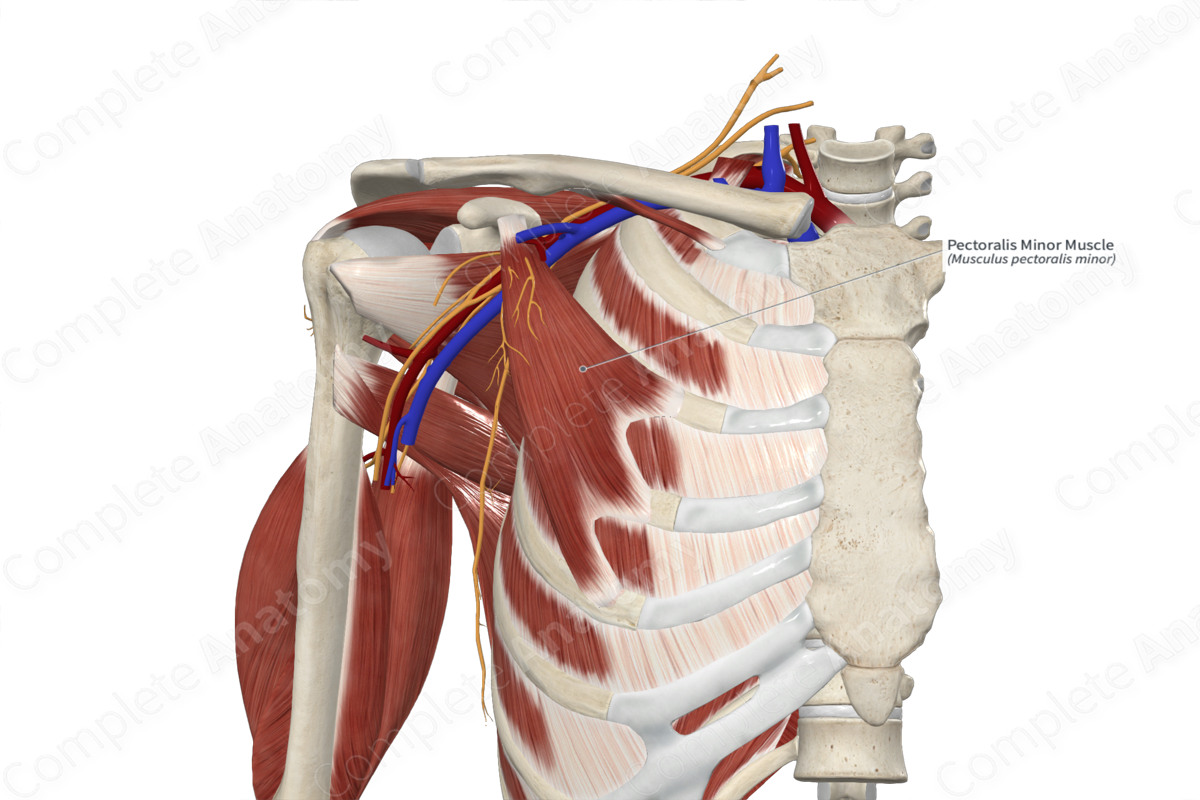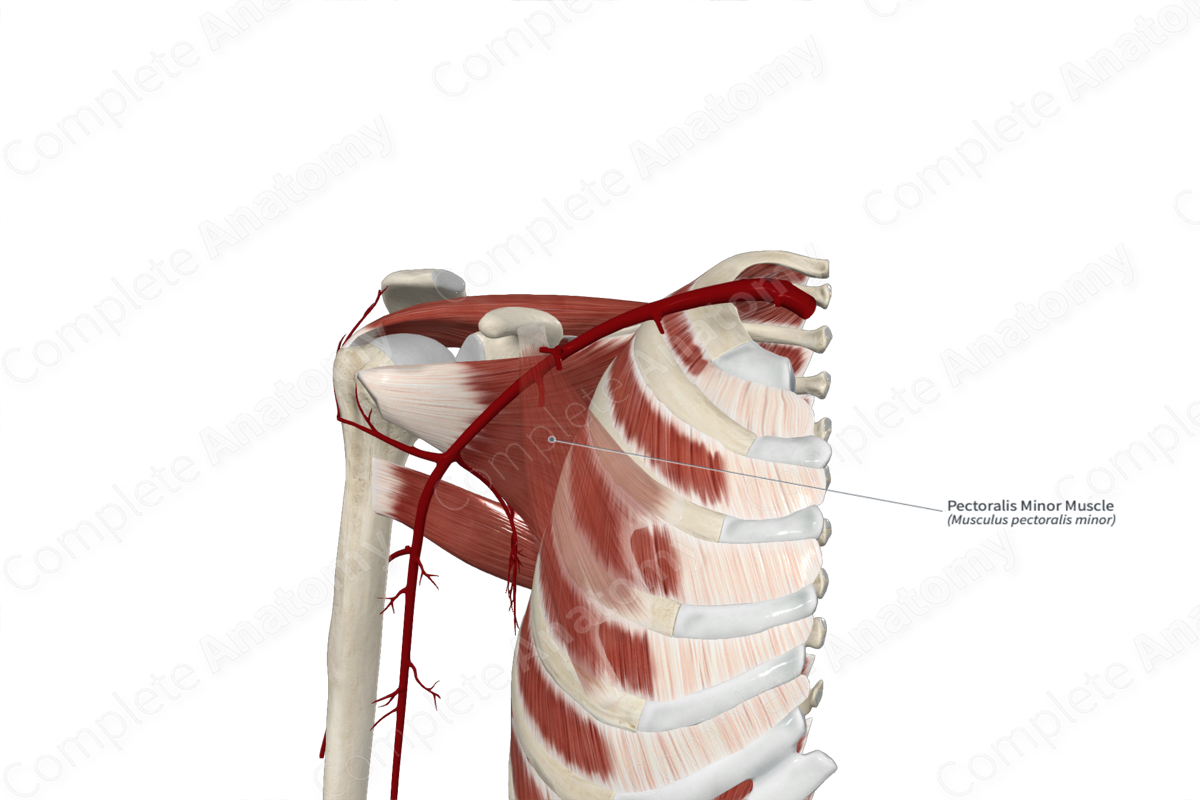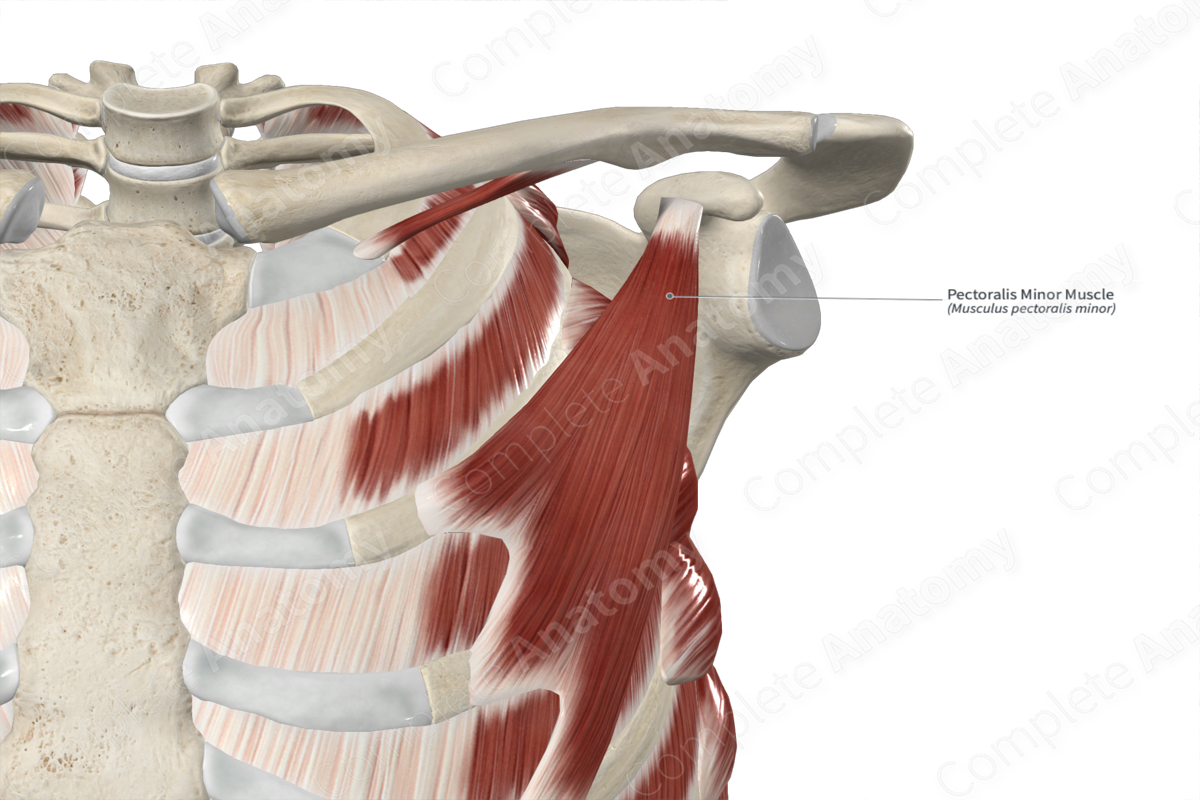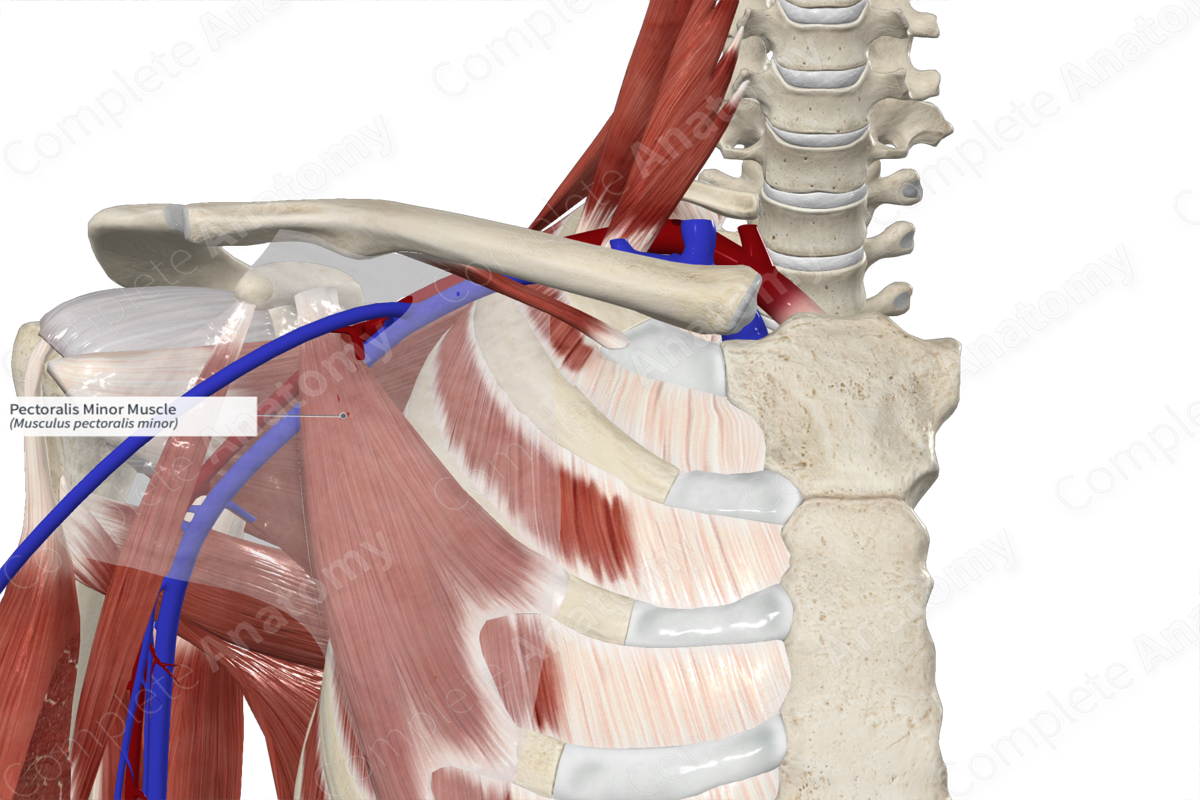
Quick Facts
Origin: Anterior ends of third to fifth ribs.
Insertion: Coracoid process of scapula.
Action: Protracts and downwardly rotates pectoral (shoulder) girdle at acromioclavicular and sternoclavicular joints.
Innervation: Medial and lateral pectoral nerves (C5-T1)
Arterial Supply: Pectoral and deltoid branches of thoracoacromial artery, superior and lateral thoracic arteries.
Related parts of the anatomy
Origin
The pectoralis minor muscle originates from the:
- external surface of the anterior ends of the third, fourth and fifth ribs, close to their costal cartilages;
- fascia covering the external intercostal muscles.
There can be variations between individuals regarding the numbers of origin sites and the ribs to which they attach.
Insertion
The fibers of the pectoralis minor muscle travel superolaterally and insert, via a short flat tendon, onto the medial aspect of the coracoid process of scapula.
Key Features & Anatomical Relations
The pectoralis minor muscle is found in the pectoral region of the thorax. It is a triangular convergent type of skeletal muscle. It is located:
- anterior (superficial) to the third to fifth ribs and the serratus anterior and external intercostal muscles;
- posterior (deep) to the pectoralis major muscle and the pectoral branches of thoracoacromial artery;
- medial to the lateral thoracic artery;
- lateral to the third to fifth costal cartilages.
The medial pectoral nerves pierce the pectoralis minor muscle. For descriptive purposes, the axillary artery is divided into three parts, based on its anatomical relationship with the pectoralis minor muscle:
- the first part is located proximal to the medial border of the muscle;
- the second part is located posterior to the muscle;
- the third part is located distal to the lateral border of the muscle.
Actions
The pectoralis minor muscle is involved in multiple actions:
- protracts the pectoral (shoulder) girdle at the acromioclavicular and sternoclavicular joints;
- downwardly rotates the pectoral girdle at the acromioclavicular and sternoclavicular joints;
- assists in depression of the pectoral girdle at the acromioclavicular and sternoclavicular joints;
- may act as an accessory muscle of inspiration (Standring, 2016).
List of Clinical Correlates
- Poland’s syndrome
References
Moore, K. L., Dalley, A. F. and Agur, A. M. R. (2009) Clinically Oriented Anatomy. Lippincott Williams & Wilkins.
Standring, S. (2016) Gray's Anatomy: The Anatomical Basis of Clinical Practice. Gray's Anatomy Series 41st edn.: Elsevier Limited.
Actions
The pectoralis minor muscle is involved in multiple actions:
- protracts the pectoral (shoulder) girdle at the acromioclavicular and sternoclavicular joints;
- downwardly rotates the pectoral girdle at the acromioclavicular and sternoclavicular joints;
- assists in depression of the pectoral girdle at the acromioclavicular and sternoclavicular joints;
- may act as an accessory muscle of inspiration (Standring, 2016).
Learn more about this topic from other Elsevier products





